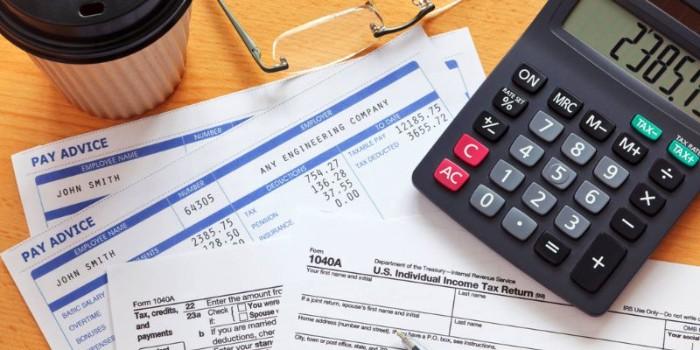All About IRS Form 1040A
Jan 10, 2024 By Triston Martin
Are you ready to tackle your yearly taxes? Filing taxes can feel overwhelming, but understanding the forms and who needs to file them is a great starting point.
Today we'll dive deeply into IRS Form 1040A – one of the core tax forms Americans use yearly.
This guide will help explain what 1040A is, who should use it, and how to fill it out so you can confidently tackle your taxes.
Overview of IRS Form 1040A
IRS Form 1040A, also known as the "U.S. Individual Income Tax Return," was a simplified version of the standard Form 1040. It was designed to accommodate taxpayers with relatively straightforward tax situations who met specific eligibility criteria.
The Form 1040A was available to individuals with taxable income below $100,000. It was commonly used by taxpayers who opted to take the standard deduction instead of itemizing deductions.
This form was unsuitable for individuals who had dependents or needed to claim certain adjustments to income, such as student loan interest deductions or self-employment tax.
The 1040A form consisted of two pages and included sections for reporting various types of income, such as wages, salaries, dividends, and interest. It also provided spaces to claim tax credits, such as the Child Tax Credit and the Retirement Savings Contributions Credit. Taxpayers could use this form to report any federal income tax their employers withhold.
Who should use Form 1040A and why

Form 1040A was designed for taxpayers with relatively simple tax situations. It was suitable for individuals who met certain eligibility criteria and preferred to take the standard deduction rather than itemizing deductions.
Taxpayers with taxable income below $100,000 were eligible to use Form 1040A. This form was often used by individuals who had straightforward sources of income, such as wages, salaries, dividends, and interest and didn't have complex deductions or adjustments to income.
Using Form 1040A offered simplicity and convenience for eligible taxpayers. It had a streamlined format, requiring less detailed information than the standard Form 1040. The calculations for taxable income and tax liability were relatively straightforward, and the form provided tax tables to determine the amount owed or the refund due.
Form 1040A was suitable for individuals with uncomplicated tax situations, allowing for a simpler and quicker tax filing process.
What information will you need to fill out Form 1040A

To fill out Form 1040A, you would typically need the following information:
Personal Information
This includes your name, address, Social Security number, and filing status (such as single, married, filing jointly, etc.).
Income Information
You must report various types of income, such as wages, salaries, tips, interest, dividends, and retirement distributions. You should have the necessary documents, such as W-2 forms from your employer, 1099 forms for interest or dividend income, and any other relevant income statements.
Deductions
If you take the standard deduction, you don't need to provide specific details. However, if you decide to itemize deductions, you need records and documentation for mortgage interest, medical expenses, charitable contributions, and state and local taxes paid.
Tax Credits
You will need the relevant information and documentation to claim those credits if you are eligible for any tax credits, such as the Child Tax Credit or the Retirement Savings Contributions Credit.
Withholdings and Payments
You should have information on any federal income tax withheld from your paychecks, estimated tax payments, or any other tax payments made throughout the year.
How to file your taxes electronically using the form
To file your taxes electronically using Form 1040A, you can follow these steps:
Choose an IRS-approved electronic filing method
Several options include commercial tax software, online tax preparation services, or the IRS Free File program. Select the method that suits your needs and meets the eligibility criteria.
Gather your information
Collect all the necessary information, including your details, income statements (W-2s, 1099s, etc.), deduction records, and other relevant tax documents.
Prepare your return
Use the electronic filing software or online service to enter your information. The software will guide you through the process, asking questions and prompting you to input the required data.
Review and validate your return.
Double-check all the information you have entered for accuracy. The software should have built-in error checks to catch any mistakes or missing information. Validate your return to ensure it meets all the filing requirements.
Submit your return electronically.
Once satisfied with your return, electronically file it through the chosen method. The software or online service will provide instructions on securely transmitting your return to the IRS.
Receive confirmation and payment options.
After submitting your return, you will receive an acknowledgment or confirmation of receipt. If you owe taxes, you can arrange electronic payment options, such as direct debit or credit card payment, through your chosen filing method.
Tips for avoiding common mistakes when filing your taxes with Form 1040A
When filing your taxes with Form 1040A, you must avoid common mistakes that can lead to delays or errors on your return. Here are some tips to help you avoid these pitfalls:
Double-check your personal information
Ensure that your name, Social Security number, and other personal details are accurately entered on the form. Mistakes in personal information can cause processing issues.
Review income documentation
Carefully review all your income statements, such as W-2s and 1099s, to ensure they are reported correctly on the form. Any discrepancies may trigger an IRS notice or audit.
Verify deduction and credit eligibility.
Be aware of the specific eligibility requirements for deductions and credits you plan to claim. Ensure you meet the criteria and have the documentation to support your claims.
Use updated tax forms and instructions.
Ensure you use the most recent version of Form 1040A and its accompanying instructions to avoid outdated information or incorrect calculations.
Check math and calculations.
Verify all calculations and math on the form. Simple errors can lead to incorrect tax liability or refund amounts.
Sign and date your return.
Remember to sign and date your completed Form 1040A. An unsigned return is considered incomplete and may cause processing delays.
Keep copies of your return and supporting documents
Maintain copies of your filed return and all relevant documents for your records. These copies can be useful for future reference or in case of an audit.
FAQs
What is IRS Form 1040A?
IRS Form 1040A was a simplified version of the standard Form 1040 used for filing individual federal income tax returns. It was designed for taxpayers with relatively straightforward tax situations and didn't need to itemize deductions.
Who was eligible to use Form 1040A?
Form 1040A was available to taxpayers with taxable income below $100,000 and who took the standard deduction rather than itemizing deductions. Additionally, filers could not have any dependents or claim any adjustments to income, such as student loan interest or self-employment tax.
Is IRS Form 1040A still in use?
No, IRS Form 1040A has been discontinued. Starting with the 2018 tax year, the IRS introduced a simplified and consolidated Form 1040, which replaced the 1040A and the 1040EZ. The new Form 1040 incorporates elements from the previous two forms, allowing for more flexibility in reporting various types of income and deductions.
Conclusion
IRS Form 1040A is an important piece of the U.S. individual income tax process that requires attention to detail and a systematic approach to filing your taxes properly. Whether you are a first-time filer or have decades of experience with filing taxes, there is something to learn about Form 1040A and helpful tips to ensure your filing process goes smoothly. The ultimate goal for any taxpayer should be filing accurately with minimal stress to take advantage of all potential tax credits and get the cash refund they deserve as soon as possible.
-
 Investment Feb 21, 2024
Investment Feb 21, 2024What You Must Need To Know About T-Bills
T-bills are short-term debt instruments issued by the U.S. Treasury. They are one of the world's safest investments because the U.S. government backs them. T-bills have maturities from a few days to 52 weeks and are sold at a discount. They're liquid and a good investment for risk-averse investors.
-
 Investment Oct 11, 2023
Investment Oct 11, 2023Investing Simplified: 9 Charts That Prove It's Time to Start Now
Explore 9 captivating charts that reveal why investing today is the smartest financial move you can make. Don't miss out on securing your financial future.
-
 Investment Oct 29, 2023
Investment Oct 29, 2023Types of Insurance Policies and Coverage You Need
Even if we can't stop the unexpected from occurring, there are occasions when we can safeguard ourselves and our families from the most severe repercussions it will have on our finances.
-
 Investment Nov 04, 2023
Investment Nov 04, 2023The Top Energy Stocks to Invest in for the Year 2023
The economy of the whole world relies heavily on the success of the energy industry. It generates and distributes the fuels and electricity that are essential to the functioning of the economy. We have mentioned below the best energy stocks to buy now.
